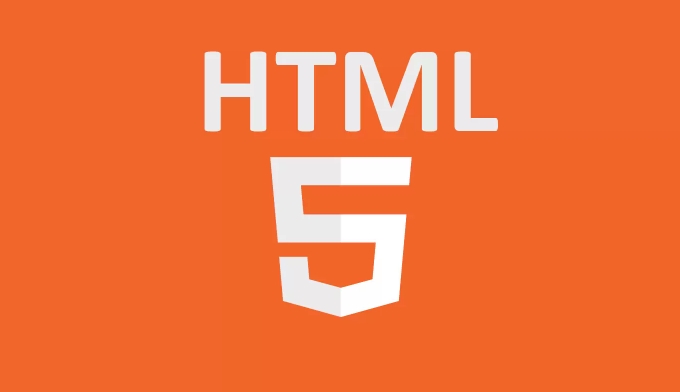Handling drop events in the HTML5 Drag and Drop API.
The drop event is a key step in the HTML5 drag and drop API, used to get drag and drop data and process interactions. 1. The default behavior needs to be blocked in the dragover event to trigger the drop; 2. Read text, links or HTML content through event.dataTransfer.getData(); 3. Use dataTransfer.files to get the dragged file object; 4. Optionally add style feedback through the dragenter and dragleave events to improve the user experience.

Drag and drop operations are common in web development, such as uploading files, sorting lists, or moving elements. HTML5 native Drag and Drop API provides basic support, where drop events are a key part of the entire process. Only by handling this event can you truly complete the data transmission and interaction.

The role of drop event
When the user drags a draggable element (such as a div or image) to the target area and releases the mouse, drop event is triggered. This is the most important step in the entire drag-and-drop process, because only in this event can you get the drag-in data and decide what to do with it.

It should be noted that drop event will not take effect by default unless you block the browser's default behavior in the previous dragover event:
element.addEventListener('dragover', function(e) {
e.preventDefault(); // The default behavior must be blocked, otherwise drop will not fire});Get drag data
In the drop event, you can access the dragged data through event.dataTransfer . This object contains all the dragged information, such as text, URL, file, etc.

A common practice is to use getData() method to read data in a specific format, such as:
element.addEventListener('drop', function(e) {
e.preventDefault();
const text = e.dataTransfer.getData("text/plain");
console.log("The text dragged over is:", text);
}); If you are dragging a link, it may be in the "text/uri-list" format; if it is HTML content, you may need to use "text/html" . The data formats from different sources are different and need to be judged based on actual conditions.
- Text content is usually used as
"text/plain" - The link is usually
"text/uri-list" - The HTML snippet is
"text/html"
Process drag and drop files
In addition to text, in many scenarios, users will directly drag files into web pages, such as uploading avatars or importing documents. At this time, you can get the file object from dataTransfer.files :
element.addEventListener('drop', function(e) {
e.preventDefault();
const files = e.dataTransfer.files;
if (files.length > 0) {
const file = files[0];
console.log("Drag in file name:", file.name);
// Here you can continue to use FileReader to read file content}
}); This method is particularly suitable for drag-and-drop upload function. Note that files is an array object of class, so you need to access it with index. You cannot directly.forEach .forEach() , but you can use Array.from() to convert it into an array and then process it.
Drag style feedback (optional but recommended)
Although it is not necessary, giving users some visual feedback during the dragging process will improve the experience. For example, change the border color or background color of the target area to let the user know that this place can be placed.
You can add or remove a CSS class from dragenter and dragleave events:
const dropZone = document.getElementById("drop-zone");
dropZone.addEventListener("dragenter", () => {
dropZone.classList.add("highlight");
});
dropZone.addEventListener("dragleave", () => {
dropZone.classList.remove("highlight");
});This way, users can see obvious prompts when dragging, improving usability.
Basically that's it. Just remember a few key points: first block the default behavior of dragover , then listen to drop , and then read data or files according to your needs. Not complicated but it is easy to ignore details, especially data format and event order.
The above is the detailed content of Handling drop events in the HTML5 Drag and Drop API.. For more information, please follow other related articles on the PHP Chinese website!

Hot AI Tools

Undress AI Tool
Undress images for free

Undresser.AI Undress
AI-powered app for creating realistic nude photos

AI Clothes Remover
Online AI tool for removing clothes from photos.

Clothoff.io
AI clothes remover

Video Face Swap
Swap faces in any video effortlessly with our completely free AI face swap tool!

Hot Article

Hot Tools

Notepad++7.3.1
Easy-to-use and free code editor

SublimeText3 Chinese version
Chinese version, very easy to use

Zend Studio 13.0.1
Powerful PHP integrated development environment

Dreamweaver CS6
Visual web development tools

SublimeText3 Mac version
God-level code editing software (SublimeText3)
 Why is my image not showing up in HTML?
Jul 28, 2025 am 02:08 AM
Why is my image not showing up in HTML?
Jul 28, 2025 am 02:08 AM
Image not displayed is usually caused by a wrong file path, incorrect file name or extension, HTML syntax issues, or browser cache. 1. Make sure that the src path is consistent with the actual location of the file and use the correct relative path; 2. Check whether the file name case and extension match exactly, and verify whether the image can be loaded by directly entering the URL; 3. Check whether the img tag syntax is correct, ensure that there are no redundant characters and the alt attribute value is appropriate; 4. Try to force refresh the page, clear the cache, or use incognito mode to eliminate cache interference. Troubleshooting in this order can solve most HTML image display problems.
 Headless CMS and Static Site Generation (SSG) with Astro
Jul 26, 2025 am 07:31 AM
Headless CMS and Static Site Generation (SSG) with Astro
Jul 26, 2025 am 07:31 AM
Use headless CMS in conjunction with Astro's static site generation (SSG) to build high-performance, content-driven websites. 2.Astro gets content from headless CMS (such as Sanity, Contentful, Strapi, WordPress, or DatoCMS) through APIs and pre-renders as static pages. 3. Use getStaticPaths() to generate the page path, obtain data through CMSAPI calls, and separate the content from the front-end. 4. Advantages include excellent performance (fast loading, SEO-friendly), friendly editing experience, architectural flexibility, high security and scalability. 5. Content updates require rebuilding of the site, and you can use CMSwebhook to touch
 How to use radio buttons in HTML5?
Jul 21, 2025 am 01:08 AM
How to use radio buttons in HTML5?
Jul 21, 2025 am 01:08 AM
The key to using radio buttons in HTML5 is to understand how they work and correctly organize the code structure. 1. The name attribute of each radio button must be the same to achieve mutually exclusive selection; 2. Use label tags to improve accessibility and click experience; 3. It is recommended to wrap each option in a div or label to enhance structural clarity and style control; 4. Set default selections through the checked attribute; 5. The value value should be concise and meaningful, which is convenient for form submission processing; 6. The style can be customized through CSS, but the function needs to be ensured to be normal. Mastering these key points can effectively avoid common problems and improve the effectiveness of use.
 H5 Barcode and QR Code Scanning with getUserMedia
Jul 20, 2025 am 02:03 AM
H5 Barcode and QR Code Scanning with getUserMedia
Jul 20, 2025 am 02:03 AM
The H5 page realizes the barcode and QR code scanning functions, mainly by calling getUserMedia to obtain camera permissions and combine it with the decoding library for real-time identification. 1. First use getUserMedia to obtain camera permissions and bind the video stream to the tag. Pay attention to the differences in HTTPS environment and device support; 2. By intercepting video frames and extracting image data, control the recognition frequency to optimize performance; 3. Use decoding libraries such as ZXing or QuaggaJS for image recognition, it is recommended to prevent the recognition results from being shaken; 4. In terms of compatibility, video constraints can be set to optimize device adaptation, and improve user experience through UI prompts; 5. In terms of performance optimization, it is recommended to use WebWorker to perform decoding tasks to avoid blocking the main
 Is the tag still used in HTML5?
Jul 21, 2025 am 02:47 AM
Is the tag still used in HTML5?
Jul 21, 2025 am 02:47 AM
Yes, it is part of HTML5, but its use has gradually decreased and is controversial. Used to combine the main title with the subtitle so that only the highest level of titles are identified in the document outline; for example, the main title and subtitle can be wrapped in to indicate that they are only auxiliary titles rather than independent chapter titles; however, reasons why they are no longer widely used include: 1. The browser and screen readers are inconsistent support for them, 2. There are simpler alternatives such as using CSS to control styles, 3. The HTML document outline algorithm is not widely supported; despite this, it can still be considered in websites or documents with high semantic requirements; while in most cases, developers tend to use a single, manage styles through CSS and maintain clear title levels.
 The Importance of Semantic HTML for SEO and Accessibility
Jul 30, 2025 am 05:05 AM
The Importance of Semantic HTML for SEO and Accessibility
Jul 30, 2025 am 05:05 AM
SemanticHTMLimprovesbothSEOandaccessibilitybyusingmeaningfultagsthatconveycontentstructure.1)ItenhancesSEOthroughbettercontenthierarchywithproperheadinglevels,improvedindexingviaelementslikeand,andsupportforrichsnippetsusingstructureddata.2)Itboostsa
 H5 Network Information API for Adaptive Loading
Jul 23, 2025 am 04:15 AM
H5 Network Information API for Adaptive Loading
Jul 23, 2025 am 04:15 AM
H5's NetworkInformation API can optimize loading strategies by judging network type. ① Use navigator.connection to obtain the network type and online status; ② Decide to load high-definition resources or lightweight content based on effectiveType values (such as slow-2g, 4g, 5g); ③ Dynamically adjust the loading strategy by listening to change events; ④ Pay attention to issues such as compatibility, limited iOS support and privacy mode restrictions.
 Defining custom vocabularies using HTML5 Schema.org markup.
Jul 31, 2025 am 10:50 AM
Defining custom vocabularies using HTML5 Schema.org markup.
Jul 31, 2025 am 10:50 AM
The Schema.org tag helps search engines understand the structured data format of web page content through semantic tags (such as item scope, item type, itemprop); it can be used to define custom vocabulary, methods include extending existing types or using additionalType to introduce new types; in actual applications, keeping the structure clear, using official attributes first, testing code validity, and ensuring that custom types are accessible; precautions include accepting partial support, avoiding spelling errors, and choosing a suitable format such as JSON-LD.







